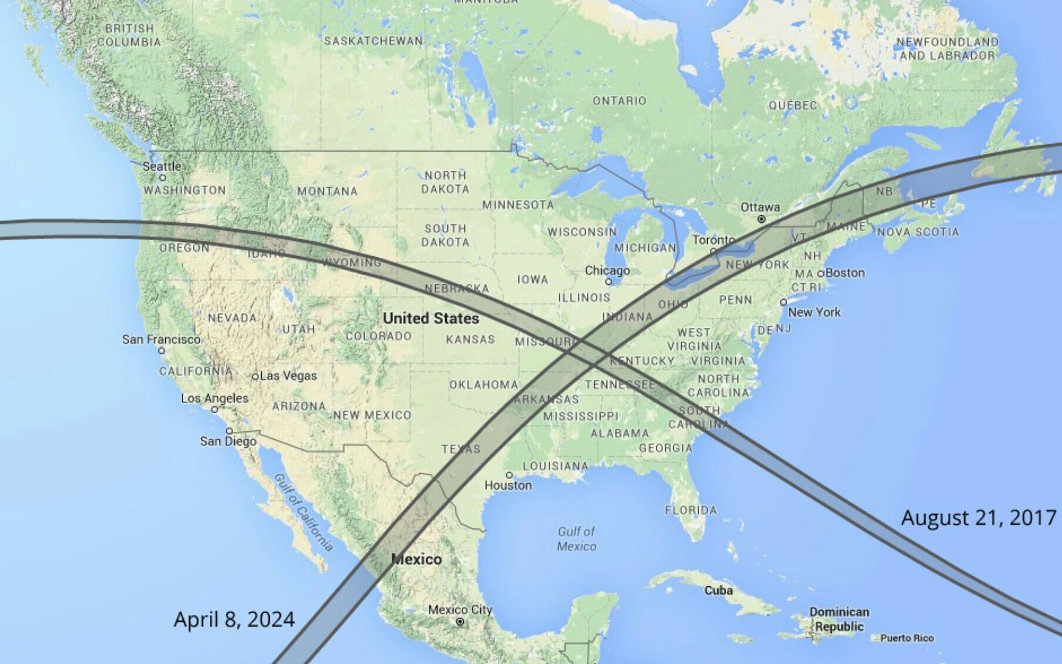What makes this total solar eclipse of April 8, 2024 special is WHERE it is occurring - over Mexico, USA, and Canada, which happens rarely, the last one crossing the US on August 21, 2017 and the next one on Aug. 23, 2044. |
|
This time it will cover a wide swath over North America in a period of several hours. At its narrowest path, it will enter Mexico at
11:07 AM and exit Newfoundland at 5:16 PM.
In the US it will go through Texas, Oklahoma, Arkansas, Missouri, Illinois, Kentucky, Indiana, Ohio, Pennsylvania, New York, Vermont, New Hampshire, and Maine. In Canada, it will enter Southern Ontario, Southern Quebec, New Brunswick, Prince Edward Island, and Nova Scotia. For major cities falling directly under its path see the image below. |
|
Total solar eclipses are excellent times for spotting elusive bodies near the Sun such as Vulcan or Planet X. They're also great times to marvel at one of the most spectacular and significant heavenly events of all time. Throughout history, total eclipses, especially solar, were forebodings or omens of great changes to come, often negative or cataclysmic, like the death of kings and leaders or the coming of war or plagues, and often they coincided with the end of an era and the beginning of another. The last total solar eclipse to cross the United States was in August of 2017. If you overlay the 2017 and 2024 paths they mark an X with the crossing point in "Little Egypt" or southern Illinois. Could this 6.6 year period mark the cancellation of the old USA and the birth of a new one? |

|
Astrologers pay close attention to eclipses and the signs and degrees they are in which give them clues to the nature of the event.
They say the effect of an eclipse can last 6 months or longer after it occurs and people or nations with those signs or degrees will be
most affected, especially if they are directly under or very near its path.
The April 8th 2024 solar eclipse will be exact at 19 degrees 24 minutes tropical Aries, so look at this part of your chart to see where you will be most affected. |

| ||||||||